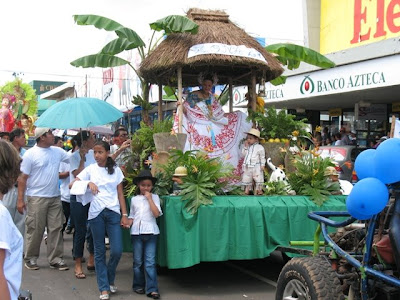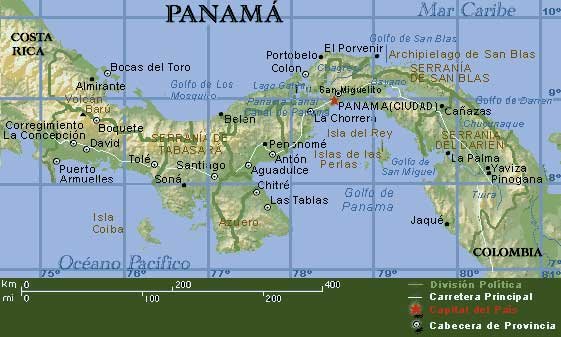April is creating a post about our trip with students and members of our community to the community of another PCV, Cassie, to see and learn about sea turtles and the environment. This post is all about how we got there.
First, what were our costs:
- Through several meetings with the Padres de Familia (PTA) of our school, we settled on how much gas (15 gallons) was needed to take us by boat to a port near Cassie's community. (We couldn't go directly to her community because the parents all agreed that the sea was too dangerous to try to come in with their boats. )
- Through talking with Cassie, we found a bus driver who was willing to drive us from the port to her community on his day off. That ran to $90.
- We also needed to buy some food to augment what Cassie's school had offered to donate. We budgeted about $30 for that.
Total: $165.00 Now, how to go about pulling together that kind of money.
One of the first places we turned was the Peace Corps Panama Volunteer Advisory Committee (VAC), which supplies Super Small Project Assistance Grants (SSPAs) with the funds raised by designing, printing, and selling the Peace Corps Panama Calendar (see our other posts about our involvement in that or visit http://www.panamapcv.net/calendar/calendar_2009/calendar2009.html to order one and support PCVs with small projects like ours). We won a $60 grant from the VAC in September and were on our way.
Our next steps were to involve the community in the efforts. Traditional fundraisers here often include selling food or snowcones at an event. In early October was our
patronales, or patron saint day, on the island. Working with the students and the parents, we planned to sell
raspado, or snow co
nes. April ended up being the one to go in to town to buy the supplies, which included blocks of ice, coloring, flavoring, sugar, cream, and paper cones and straws. But at the actual day, it was the students and parents who did most of the hard work. (Yoel, pronounced similar to "Joel", and one of our favorite students, scraping ice to sell snowcones)
(Yoel, pronounced similar to "Joel", and one of our favorite students, scraping ice to sell snowcones) (José, aka Bebo, one of our students putting flavoring on a snowcone; resuse is common here - a 2-liter bottle holds the flavoring/coloring mix)
(José, aka Bebo, one of our students putting flavoring on a snowcone; resuse is common here - a 2-liter bottle holds the flavoring/coloring mix) (Yoel adding the condensed milk - which has been put into a ketchup bottle for easier application - to a snowcone; as far as the Panamanians are concerned, it isn't a snowcone without condensed milk on top.)
(Yoel adding the condensed milk - which has been put into a ketchup bottle for easier application - to a snowcone; as far as the Panamanians are concerned, it isn't a snowcone without condensed milk on top.) (April working with both hands to put coloring and cream on cones, with the assistance of community members.)
(April working with both hands to put coloring and cream on cones, with the assistance of community members.)s, the extra condensed milk was wasn't an unrecoverable cost; instead, community members were more than willing to buy the unused cans at cost. That is a hard lesson for us to remember: you don't really need to worry about overbuying supplies for an event, as someone will likely buy the extras.
 (Some adults helped scrap ice too; Ovidio's daughter didn't even go on the trip)
(Some adults helped scrap ice too; Ovidio's daughter didn't even go on the trip) (Some community members were willing to work to scrap their own cone)
(Some community members were willing to work to scrap their own cone)The raspado event was popular and successful, but only garnered about $35 and thus left us short of the total we needed. So we planned for a BINGO day, where players could buy cards for 5cents a game and there would also be food for sale. Again, April bought the food, and we supplied the game, along with some "donated" prizes. But the students made the signs to put around the island at all the tiendas, and parents volunteered to cook (
salchichas-hotdogs ,
patacones-fried plantains, and
holajdras-fried dough kinda like a funnel cake).
 (Kenia, Soray, and Angelica copying wording from one BINGO announcement onto another)
(Kenia, Soray, and Angelica copying wording from one BINGO announcement onto another) (Soray putting the finishing touches onto her sign)
(Soray putting the finishing touches onto her sign) (Dianeth, aka Beijing, Yoel, Maycol, Amarylis, and Milagros working on a sign)
(Dianeth, aka Beijing, Yoel, Maycol, Amarylis, and Milagros working on a sign) (Three of the signs before going around the island; Angelica, Soray, Amarylis, and Kenia)
(Three of the signs before going around the island; Angelica, Soray, Amarylis, and Kenia) The actual event was held in the Casa Comunal near our house, but the Representante did not bring the key for the storage room, so there were no seats. Additionally, we had planned to cook on our stove, but our gas tank ran out as soon as they started cooking. Everyone adapted as usual, and sat on the floor and cooked over
leña (firewood), which worked out better since they were nearer the fun.
 (The cooks made a small fire in the corner of the Casa Comunal and served up yummy fried food.)
(The cooks made a small fire in the corner of the Casa Comunal and served up yummy fried food.) (April called the numbers with the help of several of the younger students)
(April called the numbers with the help of several of the younger students) (Older students enjoyed playing as well; our table was brought over to play on.)
(Older students enjoyed playing as well; our table was brought over to play on.)  (Maria Luisa, one of our original host moms, played the most cards at once, trying to win an environmental volunteer Tshirt that had been donated as a prize.)
(Maria Luisa, one of our original host moms, played the most cards at once, trying to win an environmental volunteer Tshirt that had been donated as a prize.)In fact, BINGO was so popular that even the cooks were asking us when the next one would be as soon as the first one wrapped up. At the next Padres de Familia meeting to discuss the Turtle Trip, they asked again about playing another time. So they set another date, and with a few small changes, we eventually played again, under a roof near the school.

(At the announced start time, not too many folks showed up, and again there weren't chairs)

(But they began to arrive)

(This time, we rotated who called the numbers)

(Cecilia, our second host mom, cooked; fried chicken parts and hojaldras)
 (In the end, we had some great numbers, and the benches from the chapel, all packed under the roof once the rains started.)
(In the end, we had some great numbers, and the benches from the chapel, all packed under the roof once the rains started.)We raised about $24 on the first bingo, and about $24 on the second one too.
The other part of our costs was the gas for the boat; April asked ANAM, the Panamanian environmental agency, for assistance with that, and they donated 15 gallons. (Actually getting that to the island wasn't as easy as you'd hope; the gas station in port was out of gas the day we were going back, so April had to stay out an extra day until it was delivered from Santiago.)
So that is how we patched together the bus, the boat, and the food for our trip to see Sea Turtles. In Peace Corps, sometimes the adventure is in the preperation, as much as in getting there and being there.

 (Leidys, Noritza, and Dianeth cleaning out the inside of the zapallo. The first reaction: "wow that's cold!")
(Leidys, Noritza, and Dianeth cleaning out the inside of the zapallo. The first reaction: "wow that's cold!") (Panamanians like Eneida are adept at knife work, perhaps from gutting fish and chickens for meals on a regular basis)
(Panamanians like Eneida are adept at knife work, perhaps from gutting fish and chickens for meals on a regular basis)









 This was a very traditional float and the dress featured is the traditional festival dress of Panama called a pollera. THey can be quite expensive...a really good one can cost more than $1000. I stand corrected, a friend of mine just told me that a good one made by hand can run $10,000.They are typically worn with enough beaded hair ornaments that you can't see much of the girls hair...it is just a mass of white beaded ornaments.
This was a very traditional float and the dress featured is the traditional festival dress of Panama called a pollera. THey can be quite expensive...a really good one can cost more than $1000. I stand corrected, a friend of mine just told me that a good one made by hand can run $10,000.They are typically worn with enough beaded hair ornaments that you can't see much of the girls hair...it is just a mass of white beaded ornaments. 
 Girls in the pollera style typical for young girls. I guess it takes a while to accumulate all of those hair ornaments. Those flowers can cost $6.00 a set (they are made of intricate beads). A set includes one for each side of the head. My best guess is that the girl in the center has on three sets. Her head will be almost covered by the time she is 18 if she keeps collecting.
Girls in the pollera style typical for young girls. I guess it takes a while to accumulate all of those hair ornaments. Those flowers can cost $6.00 a set (they are made of intricate beads). A set includes one for each side of the head. My best guess is that the girl in the center has on three sets. Her head will be almost covered by the time she is 18 if she keeps collecting. 




































